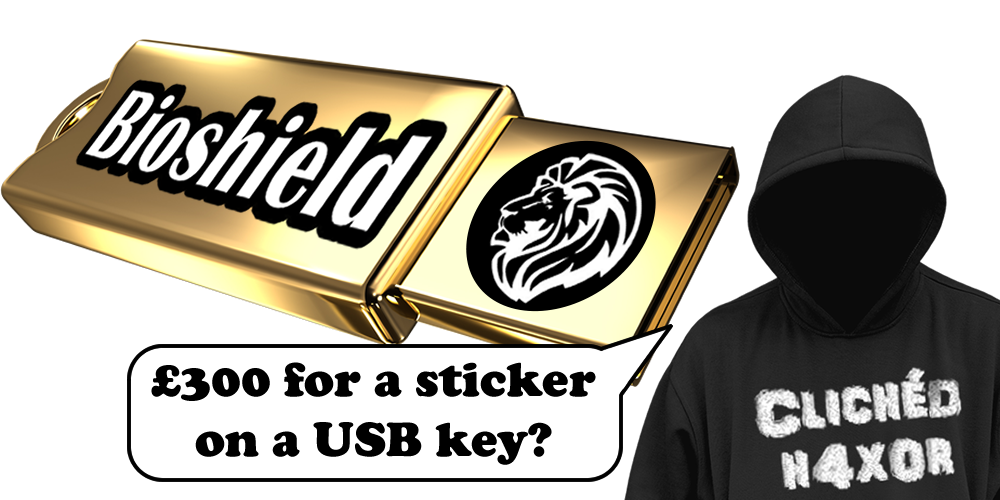Six months ago the UK’s Glastonbury Town Council set up a 5g Advisory Committee to explore the safety of the technology, and last month the local paper reported their findings.
This statement is in their recommended measures report (page 31 of this PDF):

5G Bioshield https://5gbioshield.com/ We use this device and find it helpful.

We’re aware of people playing around with Shungite or setting up a ring of EMF shields to achieve this, but we’ve never seen someone saying it can be done with a USB stick.
We are not 5g specialists, nor are we health experts, but USB sticks are well within our skill-set.
We ordered three devices and set to it.
Device review
The stick comes in a velvety branded purple bag, with a lion logo.
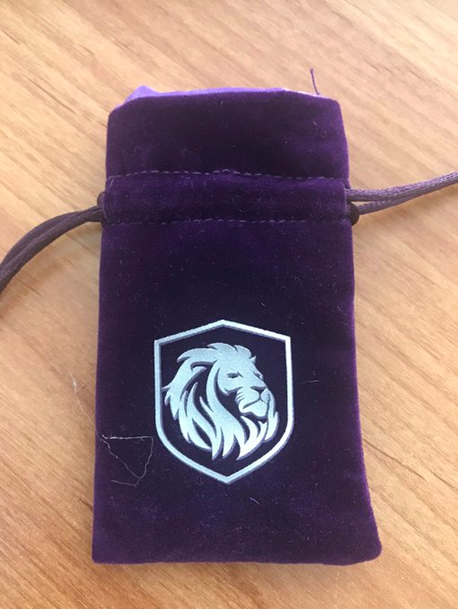
It’s undoubtedly an interesting looking USB key, with an engraved ‘crystal’ holder and a circle on the metal unit. The engraved image appears only as a banner image on their website, we couldn’t find in any other of their marketing materials. We think it was probably made by Shenzen Tushi Technology Co. Ltd in China.
BTW it looks to be George and The Dragon from the reverse of a medal made by William Wyon for Prince Albert in 1845 .
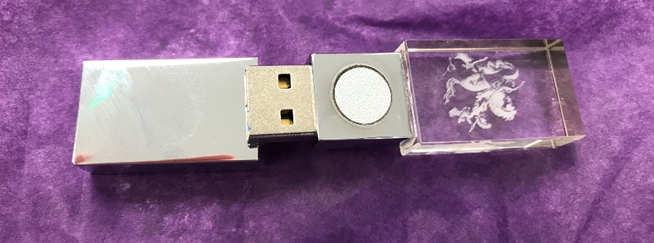
It also seems a lot like ones we’ve looked at from many online retailers:
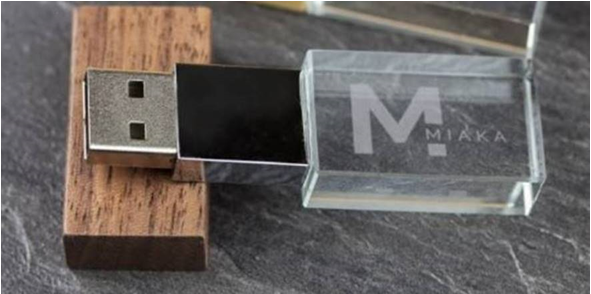
When plugged in to our test machine we may have missed the bubble of “quantum holographic catalyzer technology” appearing.
The stick comes loaded with a 25 page PDF version of the material from 5GbioShield ‘s website. It included a Q&A of distances for the “bubble” and how to know if it is working. It’s an “always on” system apparently, is always working, powered or not, so no visual checks needed.
A review of the stick’s properties revealed nothing more that what you’d expect from a regular 128MB USB key. We weren’t even sure that 128s are still in production!
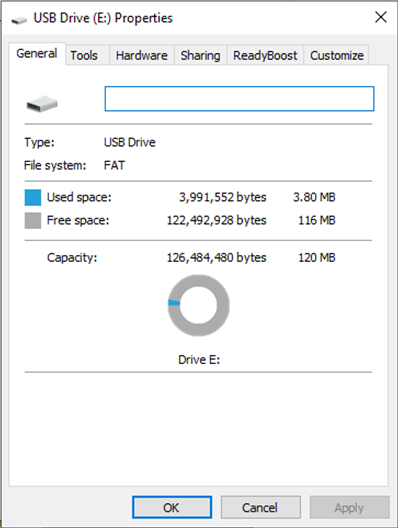
Usually with USB devices, one can look at the properties and it will list the manufacturer and extra information about the device. However, we found that all the default values remained. This is often an indication of cheap, unbranded devices.
Bus 003 Device 006: ID ffff:5678 Device Descriptor: bLength 18 bDescriptorType 1 bcdUSB 2.00 bDeviceClass 0 (Defined at Interface level) bDeviceSubClass 0 bDeviceProtocol 0 bMaxPacketSize0 64 idVendor 0xffff idProduct 0x5678 bcdDevice 2.00 iManufacturer 1 iProduct 2 iSerial 3 bNumConfigurations 1 Configuration Descriptor: bLength 9 bDescriptorType 2 wTotalLength 32 bNumInterfaces 1 bConfigurationValue 1 iConfiguration 0 bmAttributes 0x80 (Bus Powered) MaxPower 100mA Interface Descriptor: bLength 9 bDescriptorType 4 bInterfaceNumber 0 bAlternateSetting 0 bNumEndpoints 2 bInterfaceClass 8 Mass Storage bInterfaceSubClass 6 SCSI bInterfaceProtocol 80 Bulk-Only iInterface 0
So far the stick appeared to be an average USB key, but once again 5GbioShield came to the rescue with an explanation:

Tear down
As everyone is fully aware it is a USB key, we needed to tear the device down to see what else is within the casing.
First, we managed to pull the device off the crystal, which showed nothing other than an LED at the end of the stick, the same as the other ‘crystal’ USB keys we found made in Shenzen. There were no additional components or any connections.
The circular area on the main casing looked like it might be where the “quantum holographic catalyzer technology” transmitter might be. Carefully taking that off, not to damage the key components and, with crushing disappointment, it looked exactly like a regular sticker.
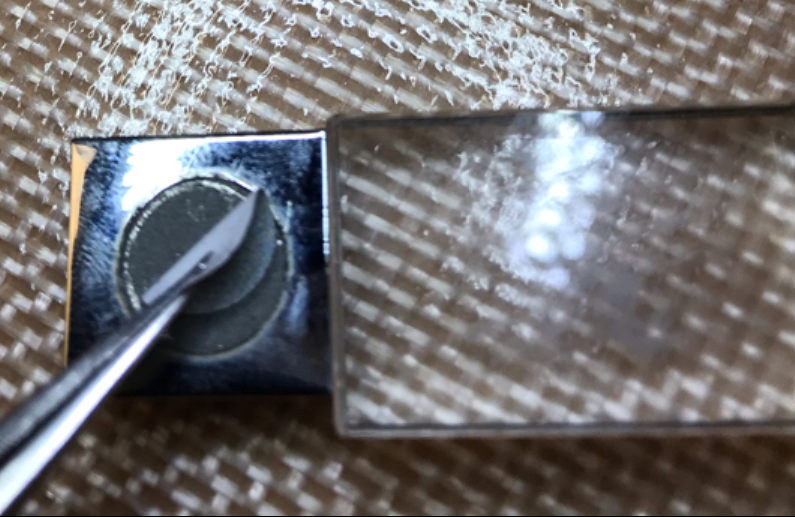
Now we cannot say this sticker does not have additional functionality unused anywhere else in the world, but we are confident you can make up your own mind on that.
Digging further into the device, there appeared to be no electrical or other connections between the device and the “sticker” and also no additional components other than the USB stick.
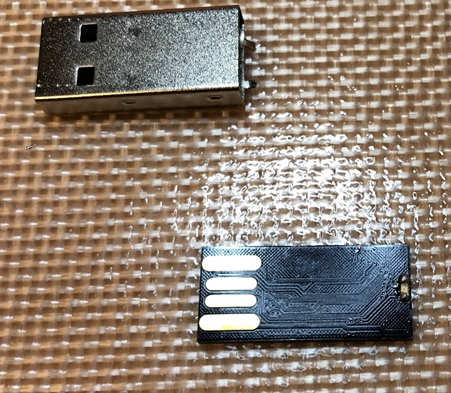
Here’s the back of the USB board with the serial number enhanced for reference:
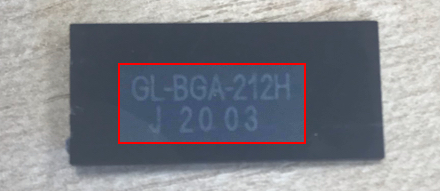
Conclusion
In our opinion the 5G Bioshield is nothing more than a £5 USB key with a sticker on it. Whether or not the sticker provides £300 pounds worth of quantum holographic catalyzer technology we’ll leave you to decide.
We do not believe this product should be promoted by publicly-funded bodies until a full, independent, peer-reviewed scientific study has been undertaken on its effectiveness. We think trading standards bodies should investigate this product.
